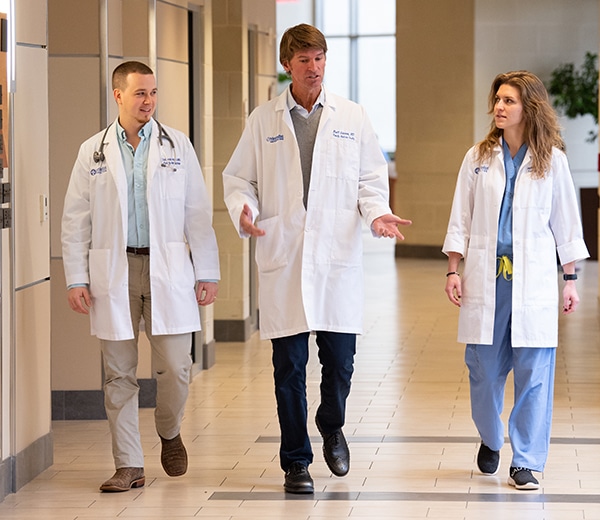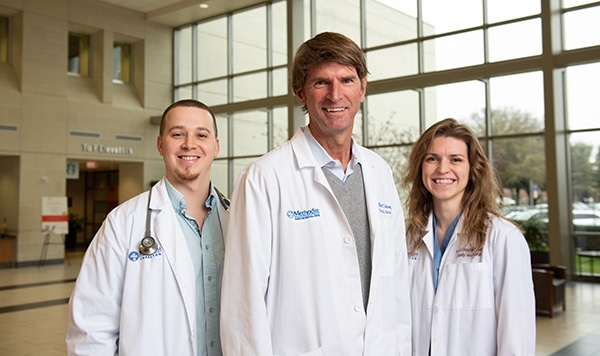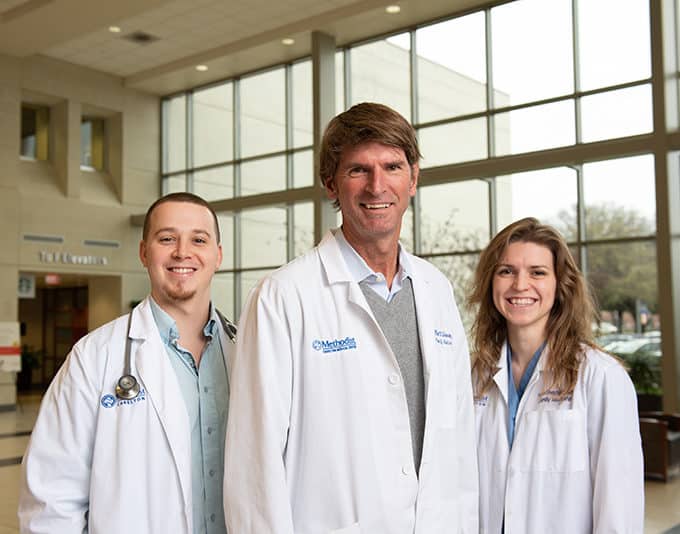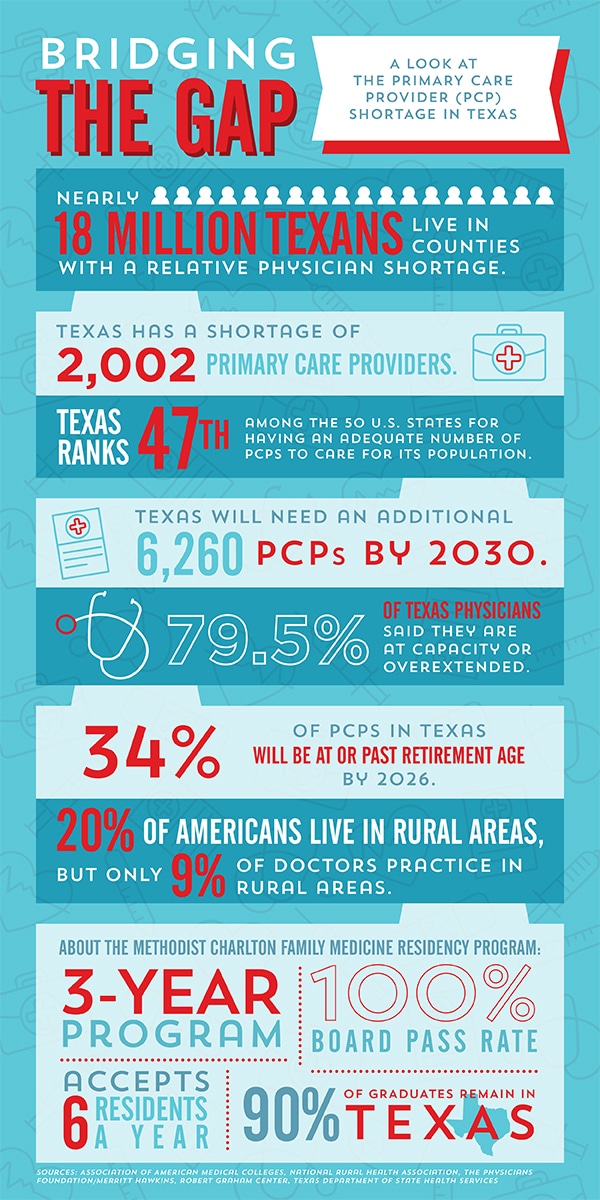They’re the first people we see when we have a cough or back pain, and they’re the first to diagnose serious health issues, like heart problems, diabetes, and depression. Primary care providers (PCPs) help us stay healthy and catch medical issues early, saving lives and money.
However, there’s a gap between the need for PCPs across the U.S. and the number of medical students who choose to pursue this specialty. Texas has a shortage of more than 2,000 PCPs. The Methodist Charlton Medical Center Family Medicine Residency Program is educating the next generation of doctors to help ensure that Texas families get the care they need for generations.
Creating more doctors
“Many patients have difficulty locating a primary care doctor who is accepted by their insurance, or they wait weeks for an appointment, especially in rural areas,” says Brett Johnson, MD, family medicine physician and program director at the Methodist Charlton Family Medicine Center. “One way to help with the shortage is by creating more doctors.”
The three-year Family Medicine Residency Program accepts six new physicians each year, so at any given time, 18 residents are being prepared to fill the gap in the state’s physician shortage. They learn about primary care in a supportive, team-based culture and receive the training they need to be successful. The program has had a 100 percent board pass rate for the past 15 years, and 90 percent of participants remain in the state.
Adding to its prestige, the Family Medicine Residency Program is accredited by the Accreditation Council for Graduate Medical Education and recently received osteopathic recognition for its manipulative medicine programs. Residents can specialize in geriatric, sports, and internal medicine disciplines.
Caring for all of Texas
While 20 percent of Americans live in rural areas, only 9 percent of physicians practice in them. The Texas Department of State Health Services estimates that nearly 18 million Texans live in counties with a physician shortage.
“Areas like West Texas struggle the most and really need more PCPs,” Dr. Johnson says. “We give residents the training to be successful in a variety of settings, from small towns to big cities.”
 Dalton Allen, MD (left), and Hope Shepherd, MD, are among 18 doctors currently participating in the Methodist Charlton Family Medicine Residency Program. The program has had a 100 percent board pass rate for the past 15 years. Program Director Brett Johnson, MD (center), is among the faculty helping to create a supportive, team-based culture where the future doctors can best help serve Texas’ diverse patient population.
Dalton Allen, MD (left), and Hope Shepherd, MD, are among 18 doctors currently participating in the Methodist Charlton Family Medicine Residency Program. The program has had a 100 percent board pass rate for the past 15 years. Program Director Brett Johnson, MD (center), is among the faculty helping to create a supportive, team-based culture where the future doctors can best help serve Texas’ diverse patient population.
Starting with medical students
Some medical students choose not to pursue family medicine because it does not pay as much as other specialties. In 2019, the average salary for a PCP was $299,000, compared to $329,000 for specialty physicians. Of the almost 19,000 U.S. medical graduates every year, only about 10 percent go into primary care.
“Students coming out of medical school usually have a lot of debt, and they want to pay it off, so they may lean toward higher-paying specialties,” Dr. Johnson says. “However, now there are much better scholarships and loan programs available to support primary care.”
In 2013, the Texas Legislature authorized funding for new programs that encourage physicians to practice primary care. The state of Texas is also providing funding for physicians who start practices in underserved areas.
 At the Methodist Charlton Family Medicine Center, staff physicians like Brett Johnson, MD (center), are helping educate the next generation of family medicine physicians in Texas, including residents Dalton Allen, MD (left) and Hope Shepherd, MD.
At the Methodist Charlton Family Medicine Center, staff physicians like Brett Johnson, MD (center), are helping educate the next generation of family medicine physicians in Texas, including residents Dalton Allen, MD (left) and Hope Shepherd, MD.
Teaching the primary care doctors of tomorrow
The Methodist Charlton Family Medicine Residency Program brings new doctors to Texas every year — and every graduate makes an impact in the community he or she serves.
“The best thing about teaching is seeing the residents on their first day at the hospital, with their eyes wide open and scared, and seeing that transform into total confidence,” Dr. Johnson says. “We know that they will go out into the community, be great doctors, and also be great ambassadors for our training program.”
HOW TO HELP
If you wish to support Methodist Health System’s efforts to train Texas’ future primary care doctors, please consider a charitable contribution to Methodist Health System Foundation.


